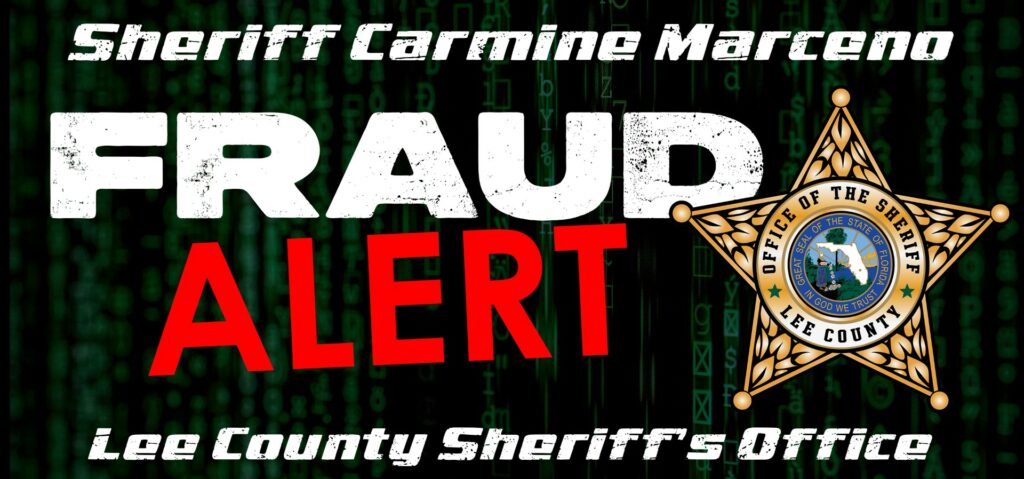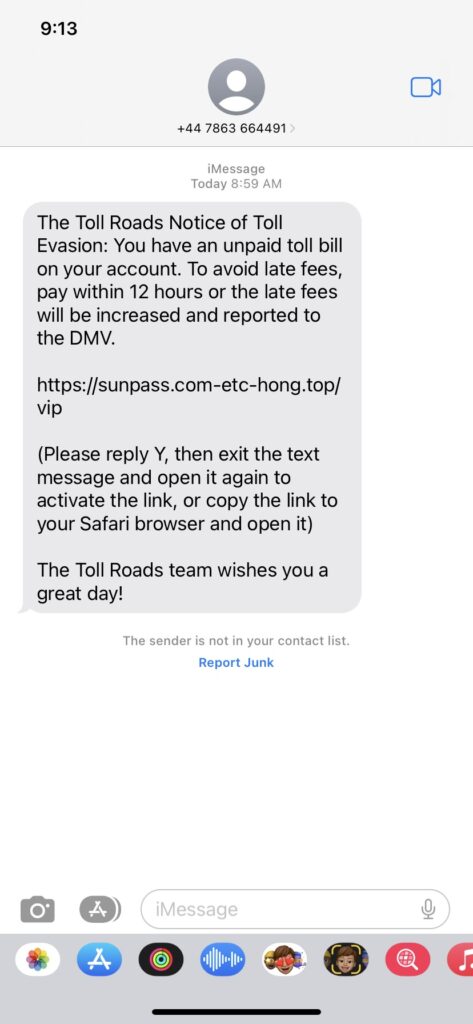SHERIFF CARMINE MARCENO’S MARCH 2025 FRAUD ALERT: NEVER-ENDING TOLL SCAMS

They seemingly arrive daily. “You have unpaid tolls.”

Many of us are now aware of this fraudulent message, but have questions regarding the content.
We presented some questions to Joshua Hanchey, Senior Technology Specialist at the Lee County Sheriff’s Office.
Question: “Is merely visiting the listed web site damaging in any way?”
Answer: “If you visit a suspicious website (especially one that looks like spam, phishing, or appears to be a scam), it could potentially harm your device, steal your data, or trick you into giving personal information. Simply visiting the site might not be damaging in itself, but if the site is malicious, it could try to install malware, use browser vulnerabilities, or redirect you to other harmful sites. Best Practice: Avoid visiting suspicious sites. If you accidentally visit one, close the page immediately, and run a security scan on your device.”
Question: “This particular message asks you to reply with a “Y” and then to open the link. What do we need to know?”
Answer: “If you’re asked to reply with “Y” or any similar response to a message, it’s often a sign of a scam, phishing attempt, or a fraud. Replying to such messages can confirm to the sender that your number is valid and may lead to more spam or malicious attempts. Best Practice: Don’t reply to unsolicited messages, especially if you didn’t expect them. If in doubt, ignore the message.”
Question: “Is it best to block the caller? “Report Junk” and delete? Both?”
Answer: “Blocking the caller is a good immediate response to stop any further communication. Many phones and messaging apps (like iMessage, for example) allow you to block and report junk. Best Practice: Block the number or contact and report it as junk or spam. This helps your phone or app provider prevent further unwanted communications from that number. Deleting the message also clears it from your inbox but does not stop the caller from trying again.”
Responding to these message have the potential to reveal personal information, compromise your accounts and/or expose sensitive data, provide validation of your text number (or email address) and may result in the installation of malware.
When uncertain as to the validity of a received message, search for the agency’s contact information using the internet and directly contact them to verify the validity of the message.
